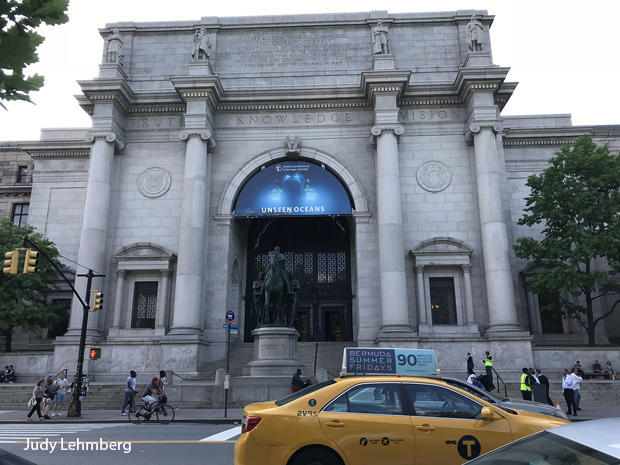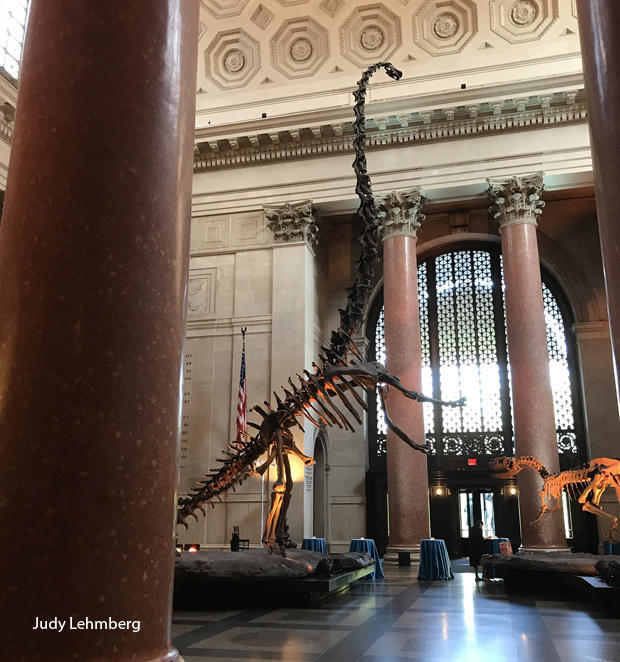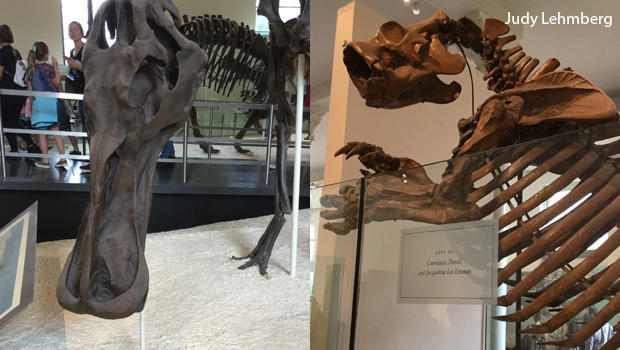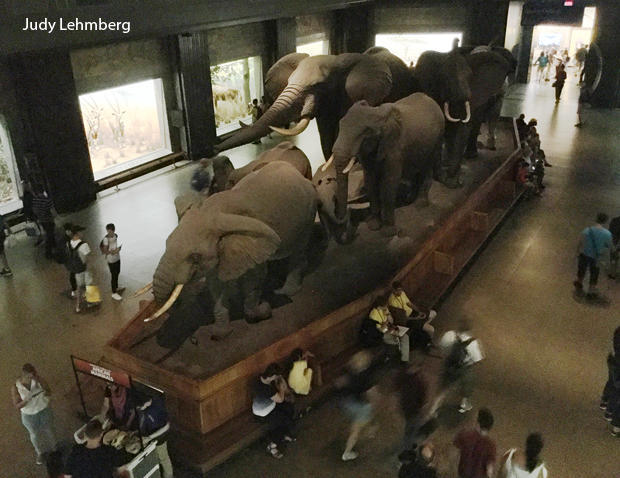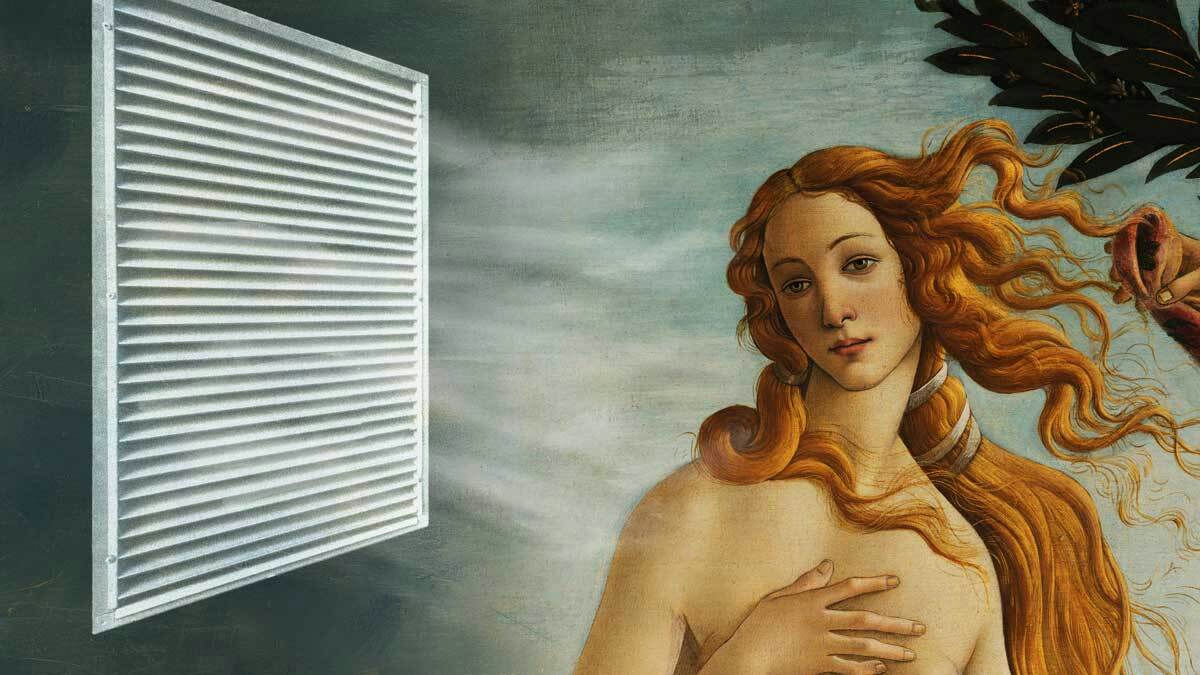Nature up close: A trip to the American Museum of Natural History
By "Sunday Morning" contributing videographer Judy Lehmberg.
I've always wanted to visit the American Museum of Natural History (AMNH), the largest natural history museum in the world, and a Mecca for any natural history fanatic. The problem is that it is in New York City – which I have nothing personally against, but it is a city. And I do not like cities. There is lots of neat stuff in cities, especially New York, but way too many people, and not enough wildlife.
But recently, very accidentally, we had the opportunity to go. More accurately, we were forced to spent two nights in New York City when a plane we were supposed to take to Montreal was cancelled due to weather. We found a hotel near La Guardia Airport, and then contemplated our choices. Luckily my husband likes natural history as much as I do, and so, after a quick bus and subway lesson from the hotel manager, we were off.
When we got to the museum, we realized a strategy was essential if we were going to see half of what we wanted to see. We looked at a map, and came up with a plan: Go to the top floor, study the map, see what we wanted to see there; then the third floor, study the map again, etc. It worked! Even though it was very crowded with summer vacationers, we got to see everything we wanted to see.
Although they are obviously not all on display, the AMNH possesses more than 33,000,000 specimens, including plants, animals, minerals, gemstones, the largest fossil collection in the world, and many, many artifacts.
The museum celebrated its 150th anniversary this year. The original museum was started by Theodore Roosevelt, Sr. (father of the 26th U.S. president), J.P. Morgan, and a sizable group of other influential New Yorkers. It was the dream of Albert Bickmore, one of zoologist Louis Agassiz's students. He lobbied the above group for years until he won the support of both them and then-governor of New York John Hoffman, who signed it into existence in April of 1869.
It was originally housed in an arsenal building from 1869 to 1877, until a new building was built in the current museum's location across from Central Park. The museum has been expanded, and today includes 29 interconnected buildings, as well as a library and planetarium.
The entrance on Central Park West, featuring the New York State Memorial to Theodore Roosevelt, leads to a vast open area with a huge Barosaurus skeleton as the official greeter. Just past the Barosaurus is the extremely impressive Biodiversity Exhibit.
It can't, of course, show all of our Earth's biodiversity, but it makes an admirable effort, with representatives of all the organism groups from algae and protozoans to plants and animals, including a very life-like model of Rafflesia, the largest flower, and one of the weirdest plants on planet Earth. It doesn't have any true roots, stems or leaves, just haustoria (root-like structures that steal nutrients from its host plant, a species of vine). Amazingly, the flowers can be over three feet in diameter and weigh over 20 pounds! Why they are as large as they are, no one knows. And they smell like something died.
The fourth floor has the most amazing displays of dinosaurs, arranged from the oldest, most primitive saurischian dinosaurs, to the ornithischians, to the primitive mammals and then, finally, the more advanced mammals.
Saurischian dinosaurs are more reptile-like, especially in the shape of their hips, while ornithischians are more bird-like, again, especially in the shape of their hips. Even when you look closely it is hard to realize most of the specimens on display are fake. Think about it: Dinosaurs are fossils. Fossils are made of stone. I have no idea how much a fossilized T. Rex weights, but scientists estimate a living one weighed at least nine tons. In fact, the museum has a special fossil building where off-exhibit dinosaur bones are stored ; it was built extra-strong just for that reason.
The Akeley Hall of African Mammals was our last stop. I don't want anyone to kill any African animal for any reason, but Carl Akeley, who killed way more than his share of all types of animals, especially African, gets a pass from me. He did it more than 100 years ago, and by all accounts was thinking more of their scientific value than as a sporting pastime. In fact, after he killed several mountain gorillas, he petitioned the king of Belgium and convinced him to establish a national park – the first one in Africa – to protect them. That park is today known as Virunga National Park and is the last stronghold for mountain gorillas.
During his years in Africa Akeley was attacked by a leopard (which he killed by cramming the arm the leopard was biting down its throat); smashed into the mud by a mad male elephant; chased by three rhinos at the same time; and had numerous tropical diseases (one of which killed him). He also vastly improved the process of taxidermy. When he first started working for the AMNH, animals were stuffed with hay and displayed in extremely un-lifelike ways. He totally changed the way taxidermy was done by creating accurately shaped frames to place the prepared skins on, and then spending hours, weeks, sometimes months getting their form correct, their face lifelike and the setting as correct as possible. His six African elephants, one of which was killed by Theodore Roosevelt, represent the height of his combined science and artistic abilities.
He also learned to sculpt; improved motion picture cameras to the point they could be used in the wild; wrote a number of books; and held more than 30 patents for his various inventions.
Seeing the museum will remain one of the best things I've ever done, but I wish we had had more time. There were many exhibit halls we never even saw. If you get a chance to go, try to give yourself at least two days to see it all. And don't go in the summer or during any holiday if you can possibly avoid it.
See also:
Judy Lehmberg is a former college biology teacher who now shoots nature videos.
For more:
- Judy Lehmberg (Official site)
- Judy Lehmberg's YouTube Channel
To watch extended "Sunday Morning" Nature videos click here!
